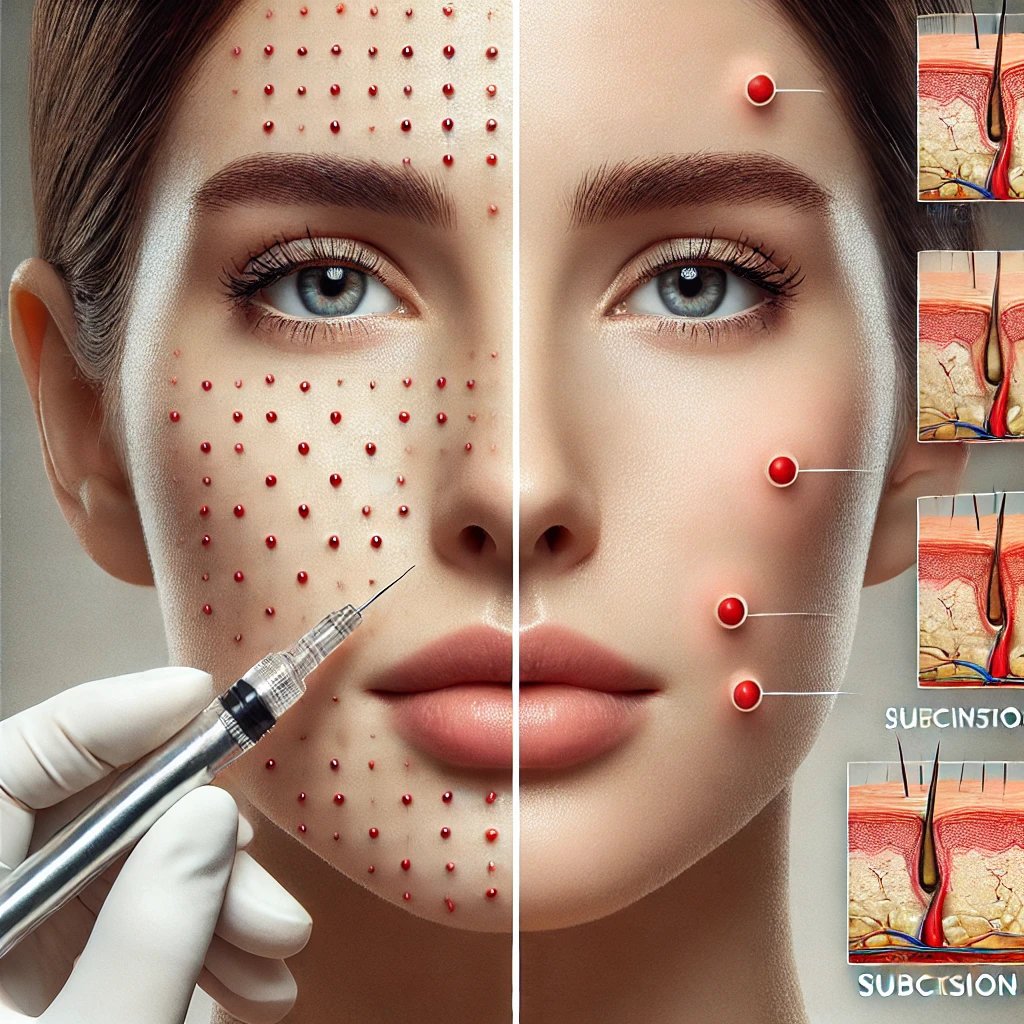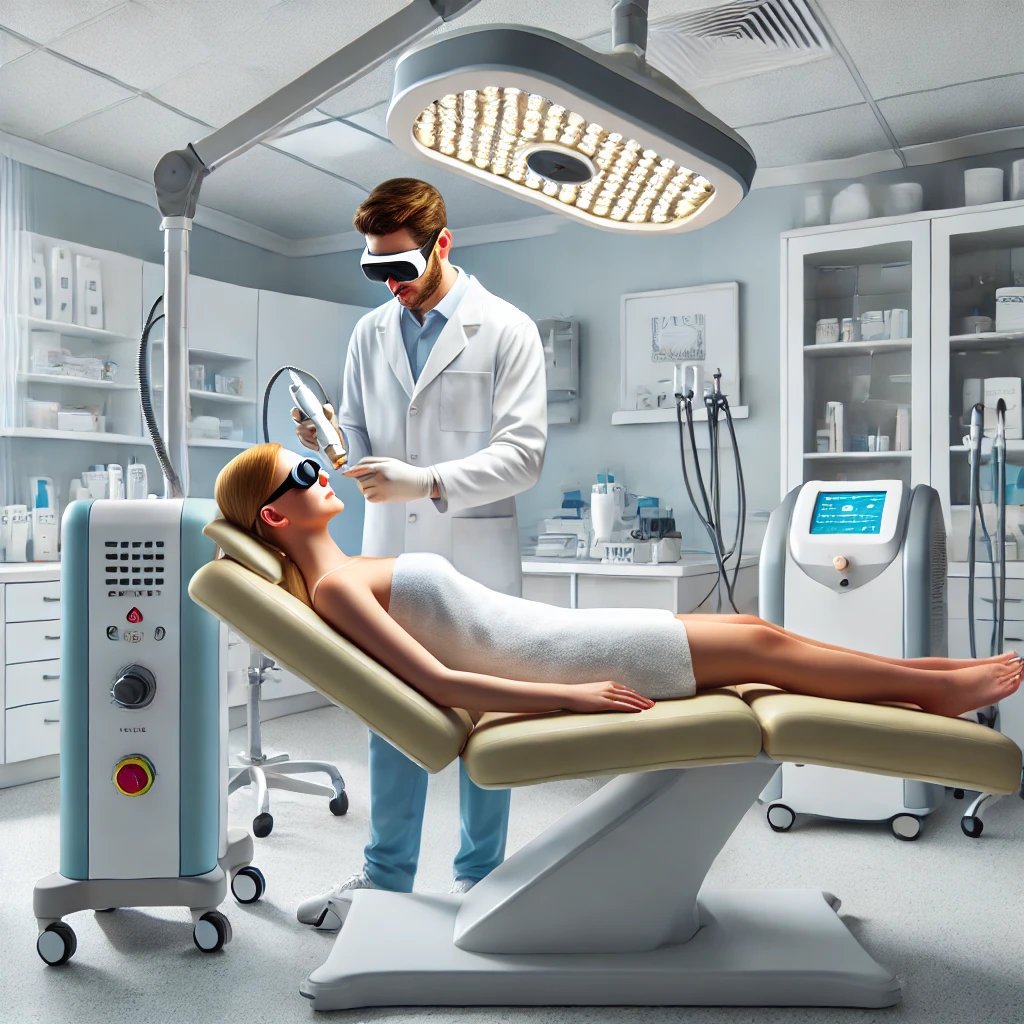Diagnosis of skin diseases
In dermatology, diagnosis involves identifying skin conditions through examination, history, and sometimes tests. Accurate diagnosis is crucial because it determines the specific cause of a skin issue, guiding appropriate treatment. Without a correct diagnosis, treatments may be ineffective or harmful, underscoring its importance as the foundation for any therapy.
Photodynamic Therapy
Photodynamic Therapy (PDT) is a treatment that uses a photosensitizing agent, activated by specific light wavelengths, to target and destroy abnormal skin cells. It's commonly used for treating actinic keratoses, superficial basal cell carcinoma, and acne. PDT offers a non-invasive, precise approach, minimizing damage to surrounding healthy tissue.
Read more
Patch testing for skin allergy
Patch testing for Allergic Contact Dermatitis involves applying small amounts of potential allergens to the skin, usually on the back, to identify specific substances causing a reaction. After 48 hours and again 72 hours, the skin is checked for signs of irritation. This test helps diagnose and manage skin allergies by pinpointing the exact trigger.
Cantharidin application for Molluscum
Cantharidin is an effective, painless treatment for Molluscum Contagiosum and warts. It targets only the epidermis, avoiding deeper skin layers and preventing scarring. A blister forms within 24-48 hours, helping lesions heal in 7-10 days. It's especially useful for patients with eczema, offering a safe alternative to more invasive methods.
Treatments for excessive sweating
Excessive sweating (hyperhidrosis) can be managed with antiperspirants, Botox injections, oral medications, iontophoresis (electric current therapy), and in severe cases, surgery like sympathectomy. The choice of treatment depends on the severity, location of sweating, and patient preferences, aiming to provide effective, tailored relief.
Microneedling with Platelet Rich Plasma
Microneedling with PRP involves using tiny needles to create micro-injuries in the skin while applying Platelet-Rich Plasma (PRP) from the patient's blood. PRP enhances healing and boosts collagen production, improving skin texture, reducing fine lines, acne scars, and promoting a youthful appearance, with more effective and longer-lasting results.
Light therapy for Acne
Acne Light Therapy uses blue and red light to treat mild to moderate acne by targeting bacteria and reducing inflammation. Suitable for those avoiding oral medications, it can reduce acne lesions by 60-70% in six weeks. Often combined with Skinoren cream, it offers an effective, non-invasive acne treatment.
Laser & Light
Laser and IPL (Intense Pulsed Light) therapy are advanced skin treatments used to address various skin concerns, including sun damage, pigmentation, and vascular lesions. Laser therapy uses focused beams of light to target specific areas of the skin, promoting collagen production and skin rejuvenation. IPL, on the other hand, delivers broad-spectrum light pulses to penetrate the skin, treating multiple skin issues simultaneously. Both treatments are non-invasive and can improve skin tone, texture, and clarity. They are effective for reducing redness, acne scars, and fine lines. Sessions are typically quick, with minimal downtime, and multiple treatments may be required for optimal results.








